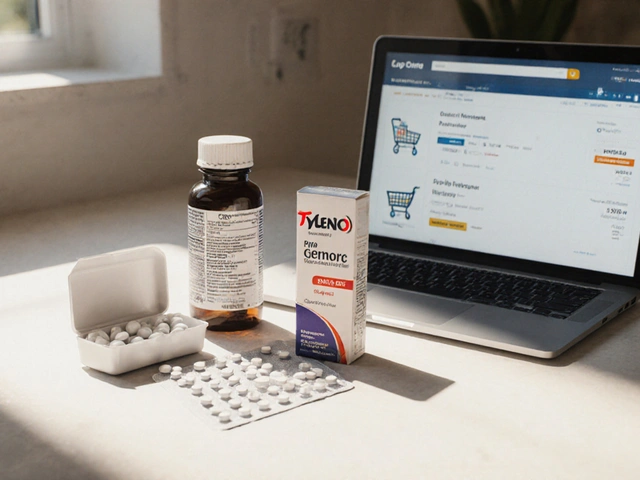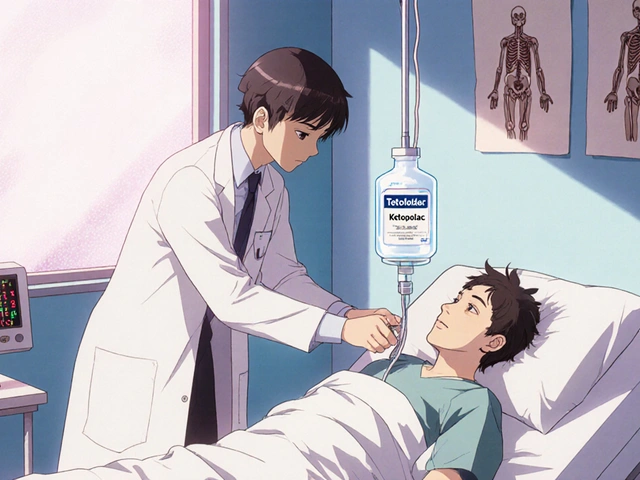Recognizing the Symptoms of Fungal Skin Infections
Before diving into the various treatment options for skin irritations caused by fungal infections, it is essential to know how to recognize the symptoms. Fungal infections usually present as red, itchy, and scaly patches on the skin. They can develop in various parts of the body, such as the feet (athlete's foot), groin area (jock itch), and scalp (ringworm). If you suspect that you have a fungal infection, examine your skin for any of the following signs: itching, burning, redness, peeling, or cracking. Sometimes, you may also notice small, fluid-filled blisters or pus-filled bumps. Remember, early detection is crucial for effective treatment and preventing the infection from spreading further.
Keeping the Affected Area Clean and Dry
One of the key factors in treating fungal skin infections is maintaining proper hygiene. Fungal infections thrive in warm, moist environments, so it is crucial to keep the affected area clean and dry. Gently wash the area with mild soap and water at least twice a day, and make sure to rinse thoroughly to remove any soap residue. After washing, pat the skin dry with a clean towel and avoid rubbing, as this can irritate the skin further. If the affected area is prone to sweating, consider using a clean, absorbent cloth or a fan to help air-dry the skin.
Applying Over-the-Counter Antifungal Creams
Over-the-counter (OTC) antifungal creams are a popular and effective choice for treating fungal skin infections. These creams contain active ingredients like clotrimazole, miconazole, or terbinafine, which help eliminate the fungus and alleviate the symptoms. To use an OTC antifungal cream, first, clean and dry the affected area as mentioned earlier. Then, apply a thin layer of the cream to the skin, following the instructions on the product packaging. Make sure to continue the treatment for the recommended duration, even if the symptoms improve, to ensure that the infection is entirely eradicated.
Using Prescription Antifungal Medications
For more severe or persistent cases of fungal skin infections, a healthcare provider may prescribe a stronger antifungal medication. These can come in various forms, such as creams, ointments, or oral medications. It is essential to follow your healthcare provider's instructions carefully and complete the full course of treatment to avoid a recurrence of the infection. Remember, prescription antifungal medications are more potent than OTC options, so make sure to inform your healthcare provider of any other medications you are taking or any known allergies to avoid potential interactions or side effects.
Trying Home Remedies for Fungal Skin Infections
Some home remedies can help alleviate the symptoms of fungal skin infections and support the healing process. One popular option is the application of tea tree oil, which has natural antifungal properties. To use tea tree oil, mix a few drops with a carrier oil, such as coconut or almond oil, and apply it to the affected area twice a day. Another option is to soak the infected area in a solution of apple cider vinegar and water for about 20 minutes daily. Keep in mind, though, that home remedies should be used in conjunction with proper hygiene and other treatments to ensure the most effective results.
Avoiding Irritants and Allergens
During the treatment process, it is crucial to avoid any substances that can further irritate or aggravate the fungal infection. This includes harsh soaps, fragrances, and chemicals found in some skincare products. Opt for gentle, fragrance-free cleansers and moisturizers that are suitable for sensitive skin. Additionally, make sure to avoid any known allergens, as allergic reactions can exacerbate skin irritations and impede the healing process.
Wearing Breathable, Loose-Fitting Clothing
The clothing you wear can either help or hinder your recovery from a fungal skin infection. Tight, non-breathable clothing can create a warm and moist environment that encourages fungal growth. Instead, opt for loose-fitting, breathable fabrics like cotton or linen that allow air to circulate and keep the skin dry. Also, make sure to change your clothes, especially underwear and socks, frequently to maintain cleanliness and prevent the infection from spreading.
Preventing the Spread of Fungal Infections
Fungal skin infections can be contagious, so it is essential to take precautions to prevent the spread of the infection to others or other parts of your body. Avoid sharing personal items like towels, clothing, and footwear with others, and wash these items frequently. If you have a fungal infection on your feet, wear flip-flops or sandals in public showers and locker rooms to avoid contaminating shared surfaces. Lastly, make sure to wash your hands thoroughly after touching the infected area to prevent the spread of the fungus.
When to Seek Medical Attention
While many fungal skin infections can be effectively treated at home, it is essential to know when to seek medical attention. If your symptoms do not improve after two weeks of consistent treatment, worsen, or spread to other areas of the body, consult a healthcare provider. Additionally, if you have a weakened immune system due to an underlying medical condition or medication, it is crucial to seek professional advice as soon as you suspect a fungal infection, as your body may be more susceptible to complications.







Let me tell you, fungal infections are no joke-I’ve had jock itch that turned into a full-blown war zone. OTC creams? They work, but only if you’re relentless. Clotrimazole isn’t glamorous, but it’s the unsung hero of dermatology. And don’t even think about stopping when the itching fades-fungi are sneaky little bastards that stage comebacks. I once missed a day of cream application and woke up with a rash that looked like a topographic map of Mars. Lesson learned: consistency beats charisma every time.
Tea tree oil works, but only if you dilute it properly. I used it straight once-big mistake. Skin didn’t just burn, it screamed. Mix one part oil to nine parts coconut oil. It’s not magic, but it’s science with a gentle touch.
Oh, so now we’re recommending vinegar soaks? Next you’ll tell me to rub garlic on my groin and call it a ‘folk remedy.’
You people are so naive-tea tree oil is only effective if you're using 100% pure, cold-pressed, Australian-sourced oil. Most of what’s sold in the U.S. is diluted with fillers, and frankly, it’s a scam. Also, apple cider vinegar? Unless it’s Bragg’s with the mother, it’s just sugar water with a sour twist. And don’t get me started on the hygiene advice-most Americans don’t even know how to dry themselves properly after a shower. It’s pathetic.
It’s funny how we treat fungal infections like they’re some kind of moral failure. Like if you just washed more, or wore better clothes, you wouldn’t get them. But fungi don’t care about your hygiene habits or your brand of socks. They just want warmth and moisture-and honestly, we all provide that sometimes. It’s biology, not blame. I’ve had athlete’s foot after hiking in damp boots. I didn’t fail. The environment won.
bro i used listerine on my feet once bc i read it on a forum. it burned like hell but the fungus was gone in 3 days. no joke. just pour it in a tub and soak. not medically proven but it worked for me.
Of course, the article mentions ‘home remedies’-as if the U.S. healthcare system isn’t already overburdened by people treating ringworm with essential oils instead of seeing a dermatologist. This isn’t Pinterest. This is your skin. If you don’t have a prescription, you’re gambling with your health. And don’t get me started on the ‘breathable clothing’ advice-cotton isn’t a luxury, it’s a baseline. If you’re wearing polyester gym shorts and then wonder why you’ve got jock itch, you’re not a victim-you’re negligent.
I’ve had recurring fungal issues since moving from a humid region to a dry one. The sudden change made my skin more sensitive. I found that using a fragrance-free oatmeal-based wash helped calm the irritation before applying any cream. It didn’t cure it, but it made the treatment bearable. Sometimes, the real issue isn’t the fungus-it’s how our skin reacts to everything around it.
While the advice provided is generally sound, I would like to emphasize the importance of consulting a board-certified dermatologist prior to initiating any long-term topical regimen, particularly if symptoms persist beyond the recommended treatment window. Fungal infections can mimic psoriasis, eczema, or even bacterial folliculitis, and misdiagnosis can lead to inappropriate therapy and prolonged discomfort. Professional evaluation remains the gold standard.
Just use terbinafine. It’s cheap, fast, and works. Stop overthinking it.